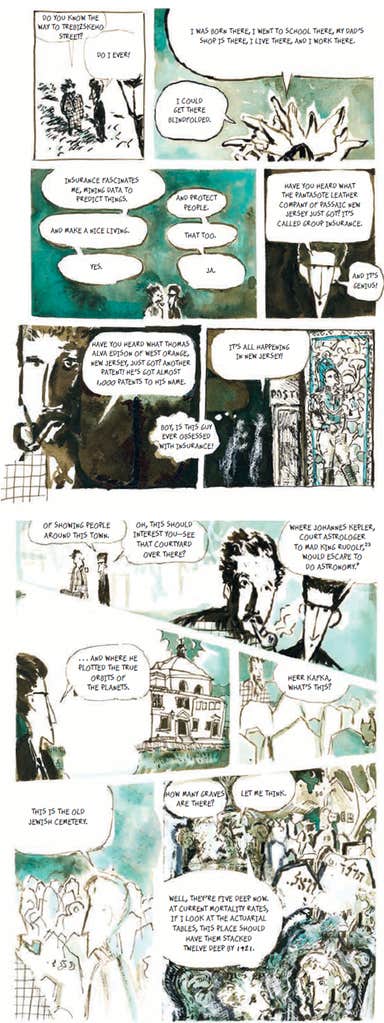The relationship between emotions and economic decision-making differs across countries, multi-national analysis finds

When making economic decisions, humans can be driven by various factors, including their goals and emotions. Past studies have hypothesized that emotions play a crucial role in economic decisions, particularly those that involve risk or trade-offs between immediate and future benefits.
Researchers at Stanford Graduate School of Business, Stanford University and University of Chicago Booth School of Business recently set out to investigate the relationship between emotions and economic choices in greater depth by analyzing a large multi-national dataset.
Their findings, published in Nature Human Behaviour, unveiled distinct patterns in the extent to which emotions predict economic decisions across several countries worldwide.
"In 2019, we encountered a new dataset that measured how individuals make financial decisions around the globe," Samuel Pertl, co-author of the paper, told Phys.org. "We were fascinated by this dataset, and as we delved deeper, we discovered an additional layer of information that the original research team had not explored: participants' emotional experiences.
"This aspect intrigued us because most prior research on the influence of emotions on decision-making has been conducted in a few highly developed countries, primarily the U.S. With nationally representative samples from 74 countries, we saw an opportunity to test whether the relationship between emotions and economic decision-making replicates and generalizes on a global scale."
Some theorists previously proposed that the link between emotions and economic choices could be universal and thus exhibits similar patterns across different countries. The key objective of the recent study by Pertl and his colleagues was to test this hypothesis, by analyzing data from the Gallup World Poll and Global Preferences Survey, two large-scale surveys spanning a total of 74 countries.
"To examine how emotions influence economic decision-making, we employed two different approaches," explained Pertl. "There are already many existing studies examining how incidental emotions influence individuals' intertemporal or risky decisions. As a first step, we summarized these studies through a meta-analysis, which pools together existing findings and summarizes them into an average relationship."
The meta-analysis carried out by the researchers unveiled that most past studies were conducted with non-representative samples, typically from a few Western countries.

This encouraged them to carry out a global analysis, leveraging large multi-national datasets. Collectively, Pertl and his colleagues analyzed the survey responses of 77,242 individuals residing in 74 countries.
"Each respondent was asked about their emotional experiences—specifically, whether they experienced happiness, enjoyment, sadness, worry, anger, stress or pain during most of the previous day, with each emotion measured separately," said Pertl.
"The dataset also captured how individuals made economic decisions, such as choosing between a smaller immediate reward versus a larger future reward (intertemporal decision), or between a certain smaller reward versus an uncertain larger reward (risky decision)."
Using statistical methods, the researchers looked at whether emotions predicted the economic decisions of survey respondents, controlling for various factors, including demographics, language differences and geographical location. To determine whether the link between emotions and economic decision-making was in fact universal, they compared the patterns they observed across different countries.
"I believe the most notable finding from our paper is that there is substantial and systematic cross-country variation in whether and how emotions predict economic decision-making," said Pertl. "For example, it has been proposed that being in a positive mood leads to greater patience (i.e., individuals are more willing to wait for a delayed reward).
"However, our analyses suggest that this relationship is far from universal. We found that while being in a positive mood was associated with greater patience in 53 countries, it was linked to greater impatience in 21 countries."
Interestingly, Pertl and his colleagues also found that the cross-country differences in the relationships between emotions and economic decision-making can be explained. Specifically, they found that emotions were stronger predictors of economic decisions in more economically developed countries (measured using the Human Development Index) and in more individualistic countries (measured using Hofstede's Individualism Index).
"Our findings underscore the need for more diverse samples when studying fundamental questions about decision-making," added Pertl. "While I am now exploring questions in a different research area, my co-authors are still working on several projects related to how emotions influence decision-making."
More information: Samuel M. Pertl et al, A multinational analysis of how emotions relate to economic decisions regarding time or risk, Nature Human Behaviour (2024). DOI: 10.1038/s41562-024-01927-3
Journal information: Nature Human Behaviour
© 2024 Science X Network














